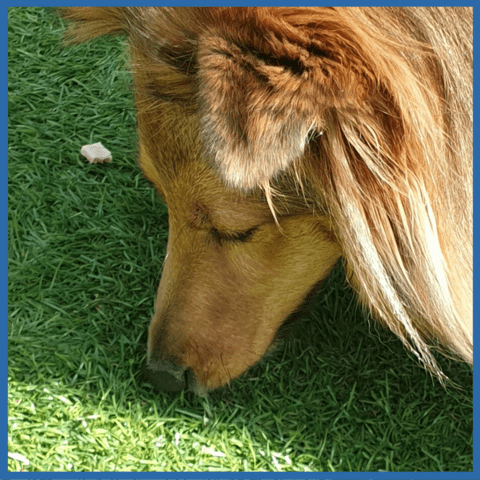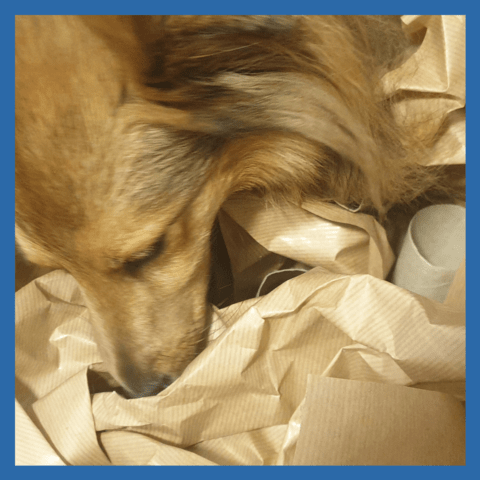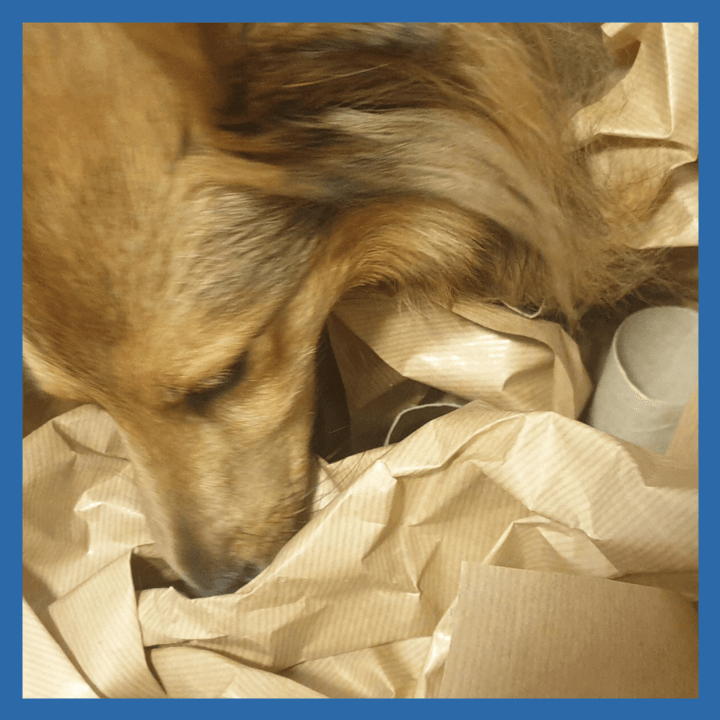There are lots of things that might worry our dogs; fireworks, thunder and loud noises, strange people and dogs, children, novel objects or even the vacuum cleaner!
We love the ‘stress bucket’ analogy to explain how our dogs respond to stress - it also really helps to explain why they might be fine with something one day but aren’t able to cope with it the next.
If we imagine that everything stressful or exciting thing that happens in our dog's day is put into a bucket, you can see how quickly the bucket starts to fill up and how it can just take just one extra thing to go into the bucket to cause it to overflow. It’s when the ‘Stress Bucket’ overflows that we start to see changes in our dogs behaviour. When our dogs are worried, these changes in behaviour might include:
- Barking and crying
- Growling/ snarling
- Hiding or running away
- Barking and Lunging when on the lead
- Shaking
- Over vigilant
- Unable to settle
It can take upto 72 hours for our dogs levels of stress hormones to drop back down to normal levels after a stressful event, so even if something stressful happened yesterday that’s still going to be filling the stress bucket, making it more likely to overflow again with something that might normally seem insignificant. For example, your dog may be worried about strange dogs approaching them - while a lot of the time they can pass a dog on a walk fairly comfortably, there may be times when they’re much more reactive. This is often because your dog already has a build up of stress and this additional event is the one that’s causing their stress bucket to overflow. We’ve all had those days where one thing after another has gone wrong, and often it’s something really insignificant that causes us to completely over-react - the same is true for our dogs.
If your dog is displaying signs of anxiety like the behaviours listed above, the best way to help them in that moment is to take them out of the situation. Once they’ve reached that level of stress, they’re not in a state to learn effectively so at this point managing the situation is more important than attempting any training.
Once you’re at a distance your dog is comfortable with, you can then start to work on a training plan - we'd always recommend getting professional help from a trainer or behaviourist that use positive reward based methods.
Alongside a training plan, enrichment can be a really helpful tool to help your nervous dog.
Firstly, enrichment activities are generally calming for your dog. Calming activities help to prevent the build up of stress in the ‘Stress Bucket’, making your dog much more able to cope with what’s going on around them. It's similar to us taking some time to go for a walk in the countryside or spend some time in the garden when we're stressed, once we've had chance to relax we're much more able to cope with life's challenges. If they can head out on a walk in a calm and relaxed frame of mind, the strange dog approaching is going to be much less of a worry than if they headed out already quite stressed.
Secondly, there are lots of enrichment activities we can try that will build our dogs confidence. By building their confidence we’re setting them up to succeed when they’re faced with any stressful situation and over time, the things that used to worry them just won’t seem as scary anymore.
Some confidence building activities to try:
Scatter feeding
We recommend scatter feeding all the time for so many things - it's so simple but doing it regularly can make such a big difference!
Start by simply scattering some of your dogs food on the floor. If they're happy searching round for the food, we can gradually start to make it more interesting by scattering the food around objects and on different surfaces.
It's important to do this gradually and make sure your dog isn't showing any signs of anxiety at any stage - if they seem worried go back to just the floor and add in other items more slowly. You don't need to use the item your dog is worried about, getting them comfortable around all different items/surfaces will be really confidence building. For example, if your dog is worried about loud noises, you could scatter some food over some newspaper that will make a slight noise when they walk on it, gradually building up to noisier surfaces like some bubble wrap or tarpaulin.

The Cardboard Box
Similar to scatter feeding, scattering some food in a cardboard box is a great confidence booster. Start with an empty box that's a comfortable height for your dog to reach into and scatter some food inside. If they're comfortable with this then you can slowly add some items into the box for them to rummage through to find the food - a mixture of crumpled up paper and toilet roll tubes can be great for this, or things like empty plastic bottles that will make some noise as they knock together.
You can also use big cardboard boxes to scatter food around too - if the boxes are big enough and your dog is happy going in and out of them, scattering some food inside is a great confidence builder too.

Confidence Paths
You can create a path for your dog to walk along using everyday household objects - you could try some cardboard, bubble wrap, a cushion or two, maybe a sturdy box to climb up onto.... anything that is safe for your dog to walk over. These paths are great fun for your dog to try, and can really help with proprioception and body awareness too as your dog needs to think about where they’re putting their feet!
Start off with a really simple path, and use some of your dog's food or tasty treats to encourage them along, rewarding as they go and also allowing them plenty of time to find their feet and explore. As their confidence grows you can start to add in some slightly more unusual objects that they’re less familiar with.
We’d love to hear more about your dogs, and how they get on with the activities so pop over to our Facebook page and let us know how you get on!


